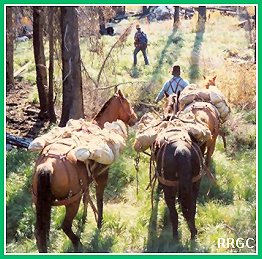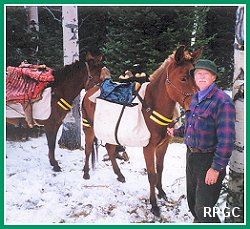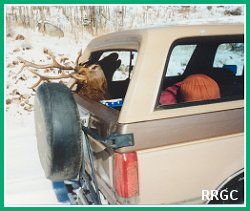Transporting
Transporting Big Game
Capt. Clark
Sunday the 15th December 1805.
I Set out early with 16 men and 3 Canoes for the Elk,
 proceed up the River three miles and thence up a large Creek from the right about 3 miles the hite of the tide water drew up the Canoes and all hands went out in three different parties and brought in to the Canoe each Man a quarter of Elk, I Sent them out for a Second load and had Some of the first Cooked against their return, after eateing a harty diner dispatched the party for a third and last load, about half the men missed their way and did not get to the Canoes untill after Dark proceed up the River three miles and thence up a large Creek from the right about 3 miles the hite of the tide water drew up the Canoes and all hands went out in three different parties and brought in to the Canoe each Man a quarter of Elk, I Sent them out for a Second load and had Some of the first Cooked against their return, after eateing a harty diner dispatched the party for a third and last load, about half the men missed their way and did not get to the Canoes untill after Dark*
Before the hunt it is important to prepare a meat transport plan starting with moving the carcass from the harvest to the hunting camp, from the camp to your vehicle, and in some cases to an airport for air shipment. If you will be transporting game across state lines, you should be aware of any requirements pertaining to the transport of carcasses where you are hunting, in the states you may be traveling through and in your home state.
If you hunted in Canada or Mexico it is equally important to know the rules for transporting harvested game and the requirements for transporting your guns into the country and returning to the US.
Special Requirements
 attached to the head or antlers whereas other states require that it be attached to the largest piece or portion of meat. attached to the head or antlers whereas other states require that it be attached to the largest piece or portion of meat.Harvest Site to Camp
The hardest transport leg is from the harvest site to the
 hunting camp and again terrain, temperature and time will play a major role on how its done. Any of the following types of equipment can be used for transporting the carcass: hunting camp and again terrain, temperature and time will play a major role on how its done. Any of the following types of equipment can be used for transporting the carcass:If the terrain is very rough special equipment such as block and tackle, ropes, and winches may be required. The size of the retrieval team will vary depending on the distance to camp, the time available to get the carcass out and the size of the animal. To save time and effort it may be simpler to quarter or bone the carcass, pack in cloth meat bags, and haul out the pieces.
At this step, safety of the hunters and the potential for major spoilage of meat have to be weighed against retrieval of the entire carcass. The decision made must meet the test that the action taken did not result in reckless wastage of meat (this may vary from state to state).
Vehicle Transport/Air Shipment
With the carcass at the hunting camp further field dressing may be needed for the remainder of the trip.
 cut into quarters to improve handling and keeping the meat cool. Provisions should be made for transporting covered quarters for large animals in a SUV or truck. cut into quarters to improve handling and keeping the meat cool. Provisions should be made for transporting covered quarters for large animals in a SUV or truck. |
||